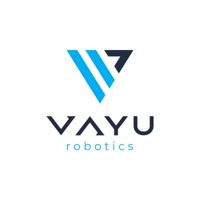Imagine: you go into a public toilet, and it smells not of "aggressive chemicals", but of freshness. The floors are shiny, the sinks are shining, and the toilets are clean— just like in the commercial. And all this without a single cleaner! No, this is not fiction — this is the result of the work of the PrimeCh CleanBotic V2 robot, which has just received a major update and is ready to turn the most "dangerous" places into oases of cleanliness.
What kind of animal is this?
PrimeCh CleanBotic V2 is an autonomous bathroom cleaning robot that has now become smarter, faster and more persistent in fighting dirt. If the first version resembled a "vacuum cleaner with ambitions", then V2 is a full—fledged cleaning service employee with advanced functionality.:
Washing module: Sprays detergents, cleans with brushes and immediately collects dirty water. You no longer have to wait for the floor to dry — you can walk right away.
Deodorization: The built-in fragrance sprayer fights odors at the molecular level (goodbye, the "scents" of public toilets!).
UV sterilization: After wet cleaning, the robot runs with a UV lamp, destroying 99.9% of bacteria — ideal for hospitals and airports.
Autonomy: 8 hours of operation, automatic charging and navigation without GPS (uses LiDAR and cameras to avoid falling into the toilet).
Why is this a breakthrough? Because toilets are difficult!
Cleaning bathrooms is not just about wiping the surface. This:
- Spilled water at the sinks.
- The paper is on the floor.
- Unpredictable "footprints" on toilet bowls.
- A constant stream of people.
A person spends 2-3 hours a day on such cleaning, and a robot spends 40 minutes, and it does it without a hint of squeamishness.
Humor in the subject:
A robot that reports: "5 puddles, 2 wet footprints and 1 forgotten phone have been found — I'm starting to eliminate them."
A "self-learning algorithm" that, after hundreds of cleanings, begins to recognize "problematic" booths and pays special attention to them.
Sensors that distinguish soap from an unknown liquid and decide whether to cause disinfection.
Where is it useful?
- Shopping malls and airports: Where toilets are used by thousands of people a day.
- Hospitals: Where cleanliness is a matter of life and death.
- Offices: Where employees will finally stop complaining about the condition of the bathrooms.
Economy: Is it profitable?
The cost of the robot is about $30,000, but it pays off in 1-2 years due to:
- Saving on cleaning salaries (especially on the night shift).
- Reduce the cost of detergents (the robot uses them more accurately).
- Risk reduction — no sick leave due to chemical exposure.
What's next?
The developers are already working on version 3.0, which will be able to:
- Clean the showers and changing rooms.
- Automatically replenish soap and paper supplies.
- To call a person only in really difficult cases (for example, "clogging of the toilet bowl at the disaster level").
Perhaps soon we will see robots that not only clean, but do it with real professionalism — and even leave jokes on mirrors.


















